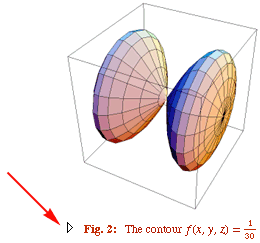|
The Book: FAQ
 What is the edition history?
What is the edition history?
Edition History
- Rose and Smith (2013 + updates)
Designed for Mathematica 11 and 10. Also compatible with Mathematica 9.
New fully up-to-date dynamic eBook. It seamlessly docks into your Mma installation. There is no print version.
- Rose and Smith (2011)
Designed for Mathematica 8 installation.
Dynamic eBook seamlessly docks into your Mma installation. There is no print version.
- Rose and Smith (2010)
Designed for Mathematica 7 installation. There is no print version. We are now 100% electronic!
- Rose and Smith (2002)
This is the only hard-copy edition ever produced. It was printed 3 times by Springer-Verlag, and it sold out 3 times. It reached the No.1 spot on Amazon’s Top-seller book rankings in Mathematics, in Economics, and in Statistics.
- Please note:
The new eBook editions includes the mathStatica 2.7 Gold software.
The old printed book (2002) does not include mathStatica 2.x.

 How can I show the code that generated the pictures in the book?
How can I show the code that generated the pictures in the book?
In the eBook, simply click on the little triangle in the figure label underneath any picture. The diagram below shows the position of the little triangle.


 How can I get a copy of the Solution Manual for the exercises?
How can I get a copy of the Solution Manual for the exercises?
Please see the Solution Manual page for more details.

 Why is the answer in the eBook different to the answer I get?
Why is the answer in the eBook different to the answer I get?
There are 3 likely explanations:
- Your earlier work is affecting your current work
Sometimes, we forget that we assigned
mu = 2
whilst working on another problem two hours before, and this assignment is now affecting the current problem. And sometimes, it can be very difficult to remember precisely what assignment we made 2 hours ago. So, if something unexpected happens, by far the best strategy is to briefly scratch one's head in puzzlement, save one's work, then quit Mathematica, start it up again, re-launch mathStatica, and try the example again. If you still get a different answer, there are two remaining possibilities.
- The answers ARE the same — they merely LOOK different
Sometimes, different versions of Mathematica may simplify the same expression slightly differently. Thus, your answer A and the eBook's answer B are in fact formally equivalent - they just look different. You can often show this by doing a test such as: FullSimplify[A==B, conditions], or you can just get an inkling of their equivalence by throwing in some numerical values for parameters.
- Eek — something *is* wrong
If a bug really really really has crept in somewhere, whether it be in our work or that of Wolfram, please let us know so that we may take delight in squishing it.

 How do I enter the symbol
How do I enter the symbol  ? ?
The Mathematica symbol  is used in many places throughout the book. is used in many places throughout the book.
It is entered as :>
NOT as :->
This is discussed in section 1.5 C of the book.

|



